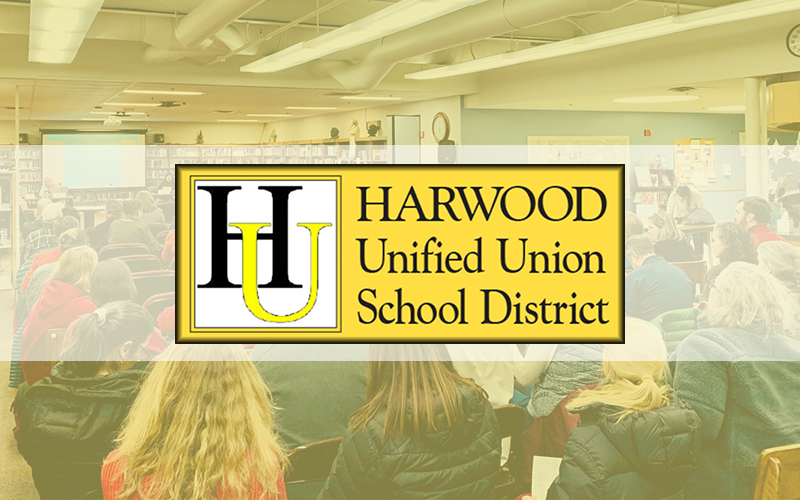The Harwood Unified Union School District (HUUSD) Board is between a rock and a hard place or, rather, between a failed budget and a pandemic. At a board meeting on April 8, recognizing the extra financial strain that taxpayers face during the coronavirus pandemic, the board discussed myriad money-saving tactics, from using the maintenance reserve fund to offset the budget to nitpicking nonessential line items, like legal fees. As board member Theresa Membrino, Fayston, put it, “When your house is on fire, who the hell cares what you have in your freezer? People have a serious loss of income and we really need to think about that.”
Ultimately, the board took the “wait and see approach,” making no decisions on the budget process. In fact, the only decision the board made regarding the budget was a decision not to develop a budget committee of staff, administrators and district residents to consider cost-saving opportunities for the fiscal year 2021 budget.
Why hold off on an opportunity for communal budget-brainstorming? According to Superintendent Brigid Nease, the administration just has too much on its plate right now. “We are swimming in alligators. I’m going to be honest, this is the absolute worst time to give us an assignment like this,” said Nease, referring to the board’s motion to develop a seven-member budget task force.
With three board members abstaining from the vote, the motion to create a budget committee was rejected in a weighted vote of 33.7% to 16.9%, with five members voting against creating a committee and three members voting for it.
Another factor in the budget process that board members considered had to do with information Nease shared regarding her meeting with members of the Vermont Legislature.
According to Nease, the Legislature is considering two draft bills that would impose budgets on all school districts in the state that haven’t approved a budget by June 30 (right now, 18 school districts in Vermont haven’t approved a budget). The first bill states that school districts without a budget by June 30 would have to operate with the same amount of money used in their 2020 budget. The second bill considers inflation and imposes budgets on school districts based on their 2020 budgets, with some inflation-based adjustments.
“If we do not have a passed budget by June 30, one of these two bills would go into effect. That’s different than the past, in which we could hold votes well into November. What you’re looking at is, do you want to try to go to a vote before June 30, or take the chance of this legislation paying us with an imposed budget?” said Nease. In other words, if the HUUSD doesn’t have a voter-approved budget by June 30, there’s a chance the district will get an imposed budget from the state that will be approved without the need to hold another election.
“It almost sounds as if we’d get a better deal if we wait,” joked board member Tim Jones, Fayston. Despite Jones’ comment, the board didn’t jump at the idea of taking on an imposed budget. Relying on the same figures as last year would mean making due with about $400,000 less than the base budget that the board is currently considering.
RECAP OF BUDGETS
For those who missed The Valley Reporter’s last school board budget article, here is a recap of the budgets that the board is currently considering.
The first is the $40,302,000 base budget. This budget is a 4.41% increase over the current budget and has an equalized education tax rate of $1.58, which is 3 cents more than the $1.55 tax rate of the budget that failed on Town Meeting Day.
The second is the $39,987,000 no-IDC-accommodations budget. This budget saves $300,000 and does not involve hiring extra staff to facilitate IDC, the policy that allows students to transfer to another school in the district by choice. At the meeting, finance director Michelle Baker spoke of the ramifications for IDC-inclined students under this option. “We wouldn’t be able to accept all the students that applied for school choice because we wouldn’t have an additional music teacher,” said Baker. This budget is a 3.59% increase over the current year and has an equalized education tax rate of $1.56, a penny above the budget that voters rejected 3,048 to 2,254 on Town Meeting Day.
Like the second budget, the third budget saves $300,000 but with the caveat of allowing anyone who’s applied for school choice to have it. This budget achieves its savings through elimination of the Hearing Project, which would provide sound augmentation technology to students and staff across the district, as well as a delay in creating the wellness center at Harwood Union High School.
All three budget scenarios here are above last year’s $38,600,862 budget. Whether the board will do more to lower the budget in the face of the coronavirus pandemic will become apparent at future meetings. For now, the board is taking the budget process one step at a time. “We thought we would be voting on a budget at our next meeting. That’s not imperative,” said Caitlin Hollister, school board chair. “We have a meeting scheduled for May 6. That would allow us to us to do a June 2 vote. We can continue to keep adjusting as we continue to get new guidance on the state. There’s no pressure to approve a budget at next meeting.”







